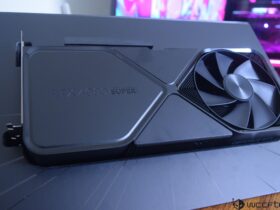Daftar Isi
chipsets play a pivotal role in shaping the performance, features, and overall user experience of smartphones. Qualcomm, a leader in mobile chipsets, has recently unveiled its Snapdragon 8 Gen 4 platform, promising significant advancements. Let’s delve into what this new chipset brings to the table and how it could impact the future of smartphones.
The Evolution of Snapdragon: A Brief Overview
A Legacy of Innovation
Qualcomm’s Snapdragon series has been at the forefront of mobile processing power for years. Each new generation introduces enhancements in performance, energy efficiency, and connectivity. The Snapdragon 8 Gen 4 continues this legacy, aiming to elevate the smartphone experience to new heights.
TSMC’s 3nm Process: A Game-Changer
One of the standout features of the Snapdragon 8 Gen 4 is its use of TSMC’s cutting-edge 3nm fabrication process. This process allows for more transistors to be packed into a smaller space, resulting in improved performance and energy efficiency. Apple’s A17 Pro chipsets were the first to utilize TSMC’s 3nm technology, and now Qualcomm joins the league. Smaller nodes mean faster speeds, lower power consumption, and better thermal management—a win-win for both users and manufacturers.
Performance and Efficiency: What to Expect
Geekbench 6 Scores and Multicore Performance
Early leaks suggest that the Snapdragon 8 Gen 4 achieves impressive multi-core scores of over 10,000 in Geekbench 6 benchmarks1. This substantial leap in performance is a testament to the chipset’s prowess. Whether you’re gaming, multitasking, or running resource-intensive apps, the Snapdragon 8 Gen 4 promises smooth and responsive performance.
Balancing Power and Battery Life
Efficiency is equally crucial. The Adreno 830 GPU maintains similar power consumption to the Snapdragon 8 Gen 2 while delivering significant performance improvements2. The entire chipset is designed to operate within an 8W power envelope, striking a delicate balance between power-hungry tasks and preserving battery life. Users can expect longer screen-on time and less frequent charging cycles.
Read More: Google Password Manager: Password Sharing Functionality on Android
Conclusion
The Snapdragon 8 Gen 4 is poised to redefine flagship smartphones. As manufacturers adopt this powerhouse chipset, we can anticipate faster app launches, smoother gaming experiences, and improved camera capabilities. Whether it’s capturing stunning photos, streaming high-quality content, or navigating demanding applications, the Snapdragon 8 Gen 4 will be the beating heart of future phones.






























